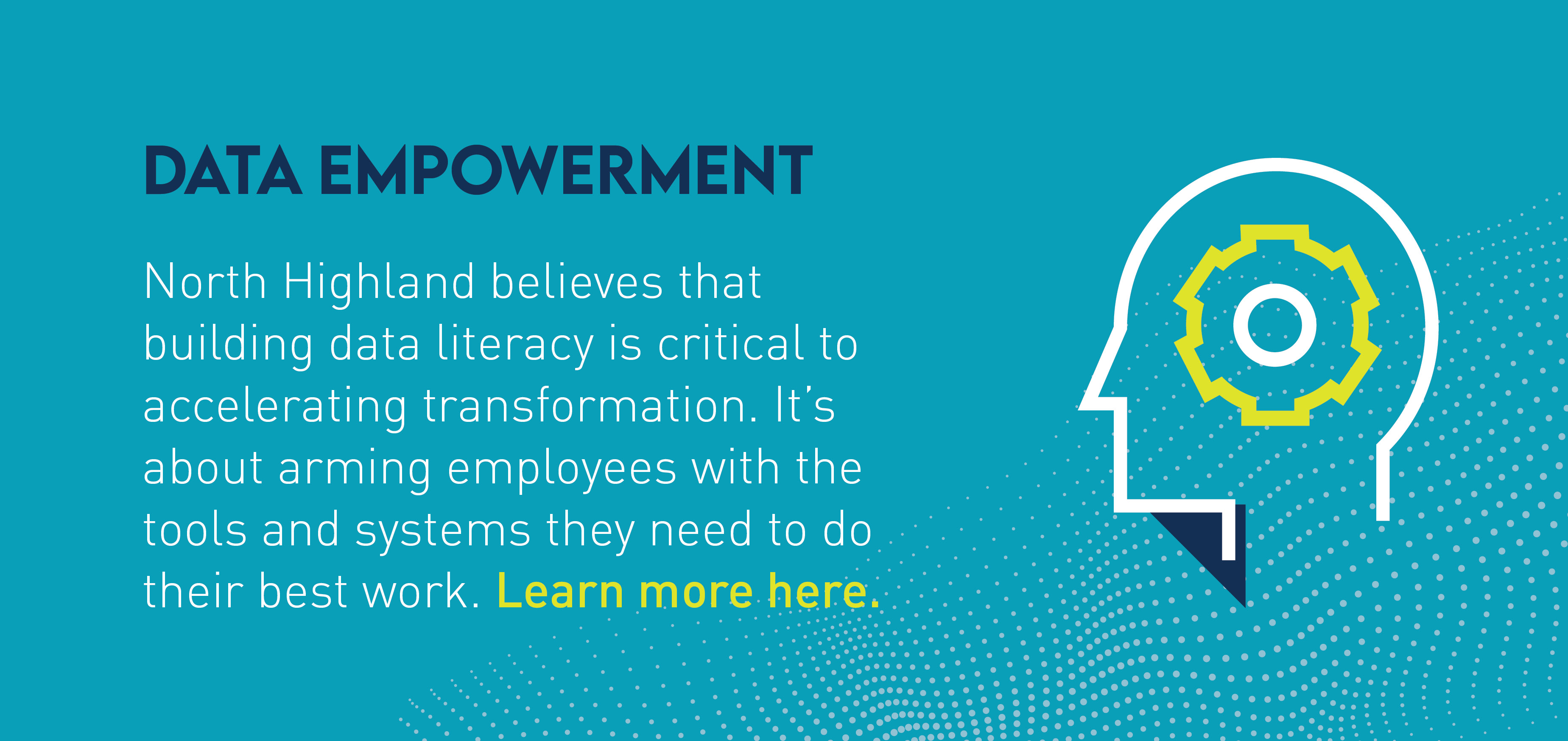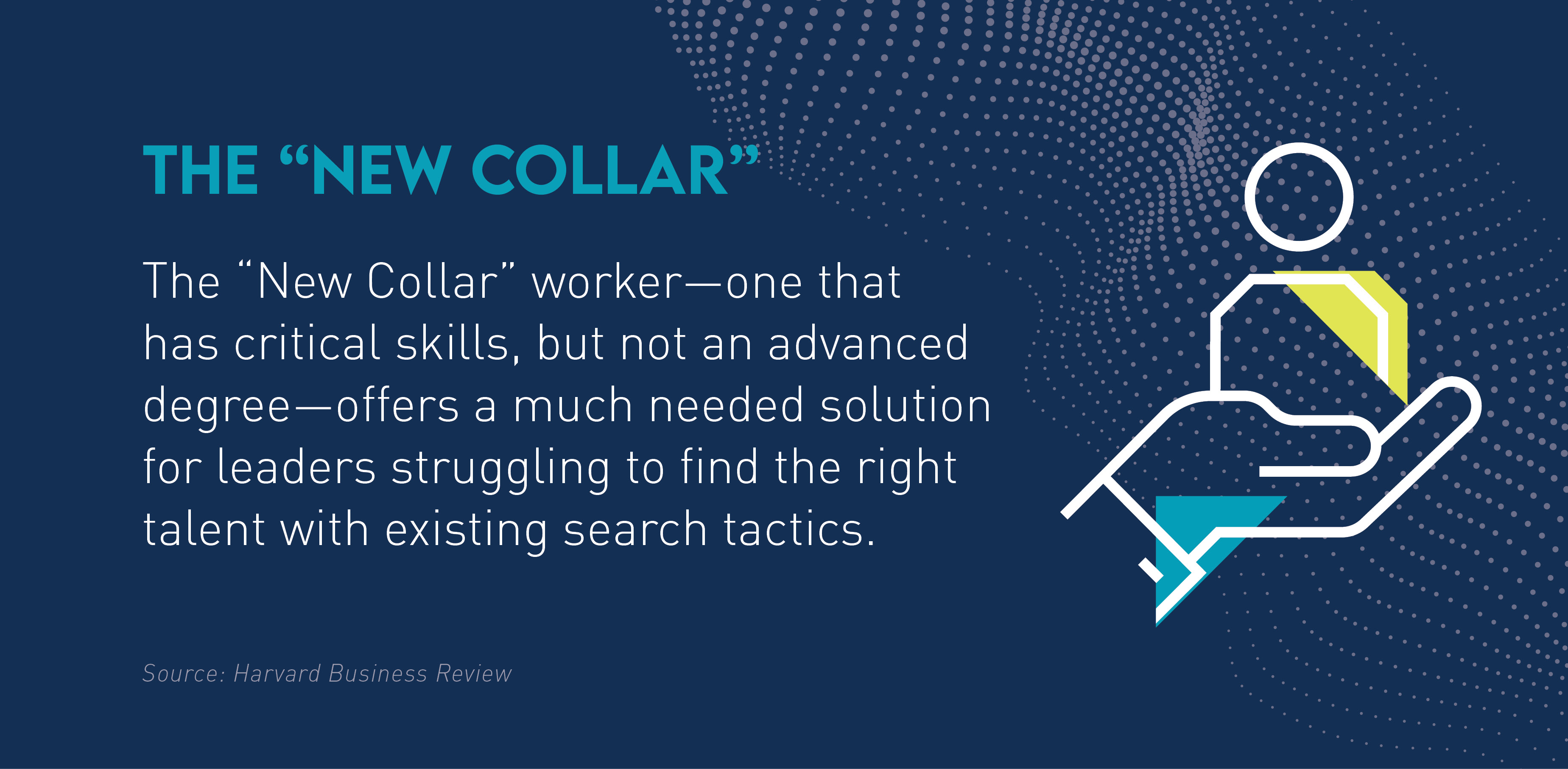The race to capture skills has gotten faster and fiercer—but thanks to modern data and technology, it’s also filled with more possibilities than ever.
Yet most organizations are not taking advantage of how modern data and systems can open the door to a more resilient workforce. Moreover, they still struggle to replace outdated requirements with a skills-first approach to filling job vacancies with new or existing talent.
Though 90 percent of global talent leaders are extremely, very, or somewhat concerned that current recruitment and hiring methods will not be enough to fill their open tech positions, 52 percent of their tech job postings list a college degree as a requirement, and 45 percent cite college degrees as a top-two determining factor in hiring decisions. -- “The State of Talent Acquisition 2023,” General Assembly
But there’s more to the story than overhauling traditional hiring requisites, because the race is getting more complex, too. Skills aren’t just reserved for people anymore. Advances in automation are augmenting workforces with technologies that promise to do more, faster.
The future of work isn’t just about technology, automation, or skills in isolation—it’s about creating and maintaining a synergy among all those elements, while prioritizing the unique potential of your employees and systems. And if leaders wish to effectively reconfigure hiring strategies, they need to balance both the human and technological perspective.
Based on best practices, new research, and a heritage of leading sustainable transformations, North Highland has identified three focus areas leaders should prioritize as they embark on transforming into a skills-first organization.
- People analytics
- Partnerships
- Cross-team collaboration
Skills-first priority #1: People Analytics
A skills-first organization embraces the fact that data may tell it what it doesn’t want to hear.
People managers may struggle to identify the nascent leadership skills of a new hire, but AI won’t. One of the many AI use-cases to rise to popularity is people analytics—wielding data to understand and optimize one’s workforce. And when embarking on skills-first transformation, people analytics can be immensely powerful.
Organizations can and should engage people analytics to...
...proactively identify, nurture, and align current skills.
...identify skills gaps or future skills needs to source the right talent.
...optimize human and technology productivity and innovation.
...cultivate forecasted skills in high-performing individuals.
...predict people movement in a way that protects business continuity.
...share stories that drive culture and reinforce current values and outcomes.
...develop more organizational behaviors that are desired by employees, like management coaching, timely feedback, and personalized solutions.
...align the organization’s values with their talent philosophy, by examining the composition of teams for diversity and skill-building.
The kicker? These people analytics capabilities can all be automated as part of day-to-day operations.
But a major obstacle to unleashing people analytics is determining the right team for the job. Everyone agrees someone should lead this work. Around the conference table, heads usually turn toward human resources (HR). Yet even the most visionary HR leader is likely to struggle with limitations on data access and cultural resistance to sharing information due to privacy concerns or lack of trust.
Limited access to these details is as frustrating for employees as it is for HR leaders and people managers. Through interviews, onboarding, evaluations, and beyond, employees willingly offer information under the impression that it will influence the way they work and their opportunities within the organization. This applies to things like learning and development, career trajectory, work available to them, and more. But when these details are archived without action, employees are more likely to develop an apathetic attitude toward keeping their information up-to-date—hindering your ability to harness critical people data.
The old rules of talent management would call for hiring an army of data scientists to overcome this obstacle and build and manage an advanced people analytics system. What if instead you built from within? What if you started by democratizing your data and technology skills, blurring the lines between white collar and blue collar to unleash the potential of new-collar talent?
What if you started by democratizing your data and technology skills, blurring the lines between white collar and blue collar to unleash the potential of new-collar talent?
Look at Airbnb: The company is improving the data literacy of all its employees—from the VP of marketing to entry-level customer service agents—with training designed to empower smarter data-driven decision-making and self-service analytics. The company’s Data University reduced the number of requests on Airbnb data scientists by 50 percent, freeing the data scientists to tackle new and more innovative work.
North Highland’s NH360 Enterprise Connect solution is one way to help expedite data literacy and data access in your organization. Through this solution, leaders gain powerful business and enterprise architecture capabilities—including enhanced data governance. These capabilities help you see and connect all the moving parts of your business, so you can better grasp the work to be done and generate value. Related to data governance, you’ll establish configurable, scalable repositories that allow you to store datasets of all sizes.
When you have a one-stop-shop for your data, over time it creates broader visibility, reduces information bottlenecks, and encourages strategic alignment. More teams can find and apply data, rather than one group controlling interpretation and sharing.
By connecting your essential systems and data, you foster strategic alignment across your enterprise—including among your leaders. Data sharing and interpretation are no longer dominated by one group. Instead, different parts join to create a shared reality and a more precise view of the work that needs to be done—now and in the future.
But what else can people analytics do?
You'll be able to identify existing skills and understand gaps, so you can align on the right learning and development programs.
Matching employees with roles based on their skills leads to better job fit and higher performance.
People analytics can make the right employees more visible for internal opportunities and promotions. Plus, you'll have data-backed insights on how to best prepare them for their next opportunity.
Skills-first priority #2: Partnerships
Engage partners that can navigate internal boundaries and implement win-win changes that set a skills-first flywheel in motion.
When just beginning to orchestrate and automate the complex dance between the skills you have, the skills you need, and the work to be do ne, companies should anticipate friction. It won’t happen overnight—nothing meaningful ever does—and the process will likely expose some areas for improvement.
ne, companies should anticipate friction. It won’t happen overnight—nothing meaningful ever does—and the process will likely expose some areas for improvement.
To navigate the challenges that come with transforming to a skills-first organization, the right partnerships are instrumental. This is even more true in a tight labor market, where internal resources are limited for most organizations.
Take OneTen, for example. The nonprofit—formed by major corporations like AT&T, Delta, Bank of America, Nike, and Walmart—was designed to lend a hand to companies striving for real, systemic change in the Diversity, Equity, and Inclusion (DEI) space. The nonprofit focused on initiatives such as lifting one million Black workers into better paying jobs and advancing hiring and promotion decisions based on skills instead of college degrees. It took OneTen getting hands-on and moving in-house with its member companies to make change happen. It helped its member companies rewrite job descriptions to remove unnecessary degree requirements, launch design apprenticeship programs, and create a network of HR and hiring managers to capture key learnings.
And in the messy middle of transformation, an external partner can often play better in the boundaries between business units, and objectively identify opportunities to align leaders against skills-first approaches that move the ball forward for the entire enterprise.
A Managed Service or “teams-as-a-service” workforce solution allows you to drive immediate progress on today’s priorities while developing tomorrow’s skills and capabilities—all without disrupting day-to-day operations. We embed experts with future-ready skills directly within your teams, allowing them to work side-by-side with your existing talent and transfer knowledge and expertise in real-time. Through this learn-by-seeing approach, your people are set up to quickly absorb critical skills, boosting your capacity and momentum. To learn more about how this service can streamline your skills-first transformation, check out our blog, “Multiplying Value with Managed Services.”
3 Ways Managed Services Powers Modernization
#1: Ensuring data quality.
Partnering with a managed service provider can help you eliminate obstacles to data quality, ensuring your talent-related data is accurate and reliable.
#2: Uncovering insights.
A partner can help you better interpret people analytics and uncover insights that are critical to your skills-first transformation.
#3: Converting insights into action.
Using your newly elevated insights, we will also help you design and execute a game plan for the composition of your workforce.
Skills-first priority #3: Cross-team collaboration
A skills-first organization focuses less on what its talent has done and more on what it could do.
Skills-first organizations can’t gatekeep data or hide talent. Instead, they should promote talent mobility and utilitarian, forward-looking skill-building that will benefit a broad range of projects and teams.
According to Forrester research, internal talent marketplaces promote mobility by solving two problems: 1) They can systematically help existing employees find jobs for which they might be a strong fit, increasing internal mobility and 2) they can create gig marketplaces where fungible talent participates in ad hoc tasks, projects, and gigs.
Technology is your most powerful collaboration tool. Solutions like North Highland’s NH360 Enterprise Connect establish a single source of truth and a shared definition of success.  A user-friendly integration solution can generate a dynamic blueprint of your business to seamlessly connect, align, and orchestrate your skills with the work to be done, boosting agility along the way.
A user-friendly integration solution can generate a dynamic blueprint of your business to seamlessly connect, align, and orchestrate your skills with the work to be done, boosting agility along the way.
Plus, a common platform will help organizations reveal and activate untapped skills. It will directly connect employees with opportunities to build the skills the enterprise needs next. Most importantly, a common platform can have a profound impact on your ability to align leaders and secure their buy-in. And this will ultimately bring you closer to making enterprise success a shared journey, one that benefits the bottom line and unleashes human capacity.
A skills-first organization gives itself permission to disprove talent management assumptions that are limiting potential.
Transformation takes balance
A holistic approach—one that combines people analytics, partnerships, and cross-team collaboration—is not only best practice, but a pivotal strategy.
- People analytics allows you to leverage data-driven insights to unleash the full potential of your workforce.
- Strategic partnerships help to fortify resources and tap into collective expertise.
- Cross-team collaboration drives innovation and adaptability by mobilizing your talent.
And when combined, these elements will help you cultivate a workforce and leadership pipeline that thrives. With platforms like NH360, Managed Services, and our other proprietary methods, North Highland has a history of integrating these concepts to ensure our clients find that synergy between data, systems, and skills. This way, they can feel confident in workforce sustainability and business continuity regardless of change and uncertainty.
Building Capabilities: A Managed Services Success Story
A luxury automotive retailer wanted to improve its ability to deliver vehicles by focusing on four areas: speed, cost, quality, and employee/customer satisfaction. But leaders knew the business was lacking certain skills and capabilities needed to make change happen. To generate momentum, the auto retailer brought in a team of experts from North Highland to temporarily fill in skills gaps while helping build key capabilities among internal teams. It needed expertise in areas such as executive coaching and Agile (i.e. Product Owners and Scrum Masters) to begin moving toward its vehicle delivery goals. We helped the retailer get up and running and establish critical ways of working, processes, and measurement capabilities. At that same time, we worked shoulder-to-shoulder with employees to build capabilities internally—ensuring that progress would continue long after our engagement concluded.










